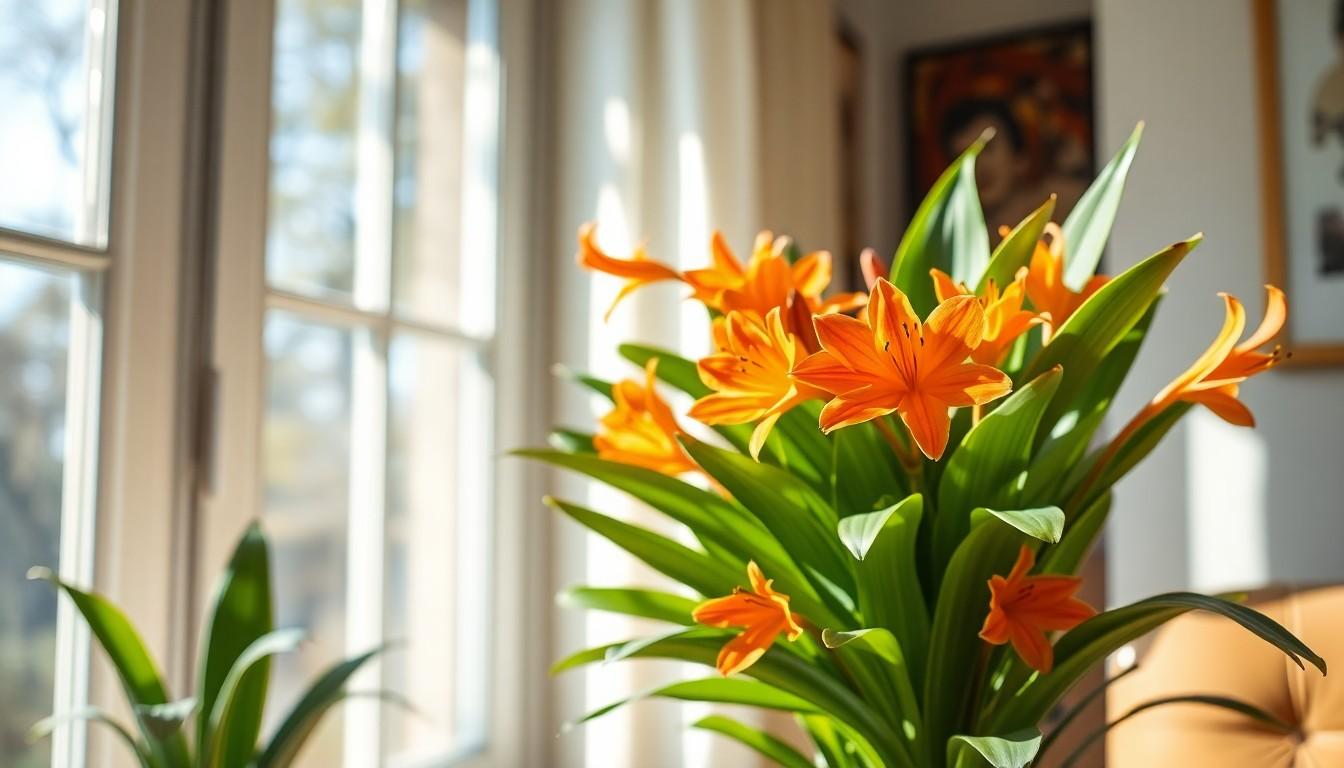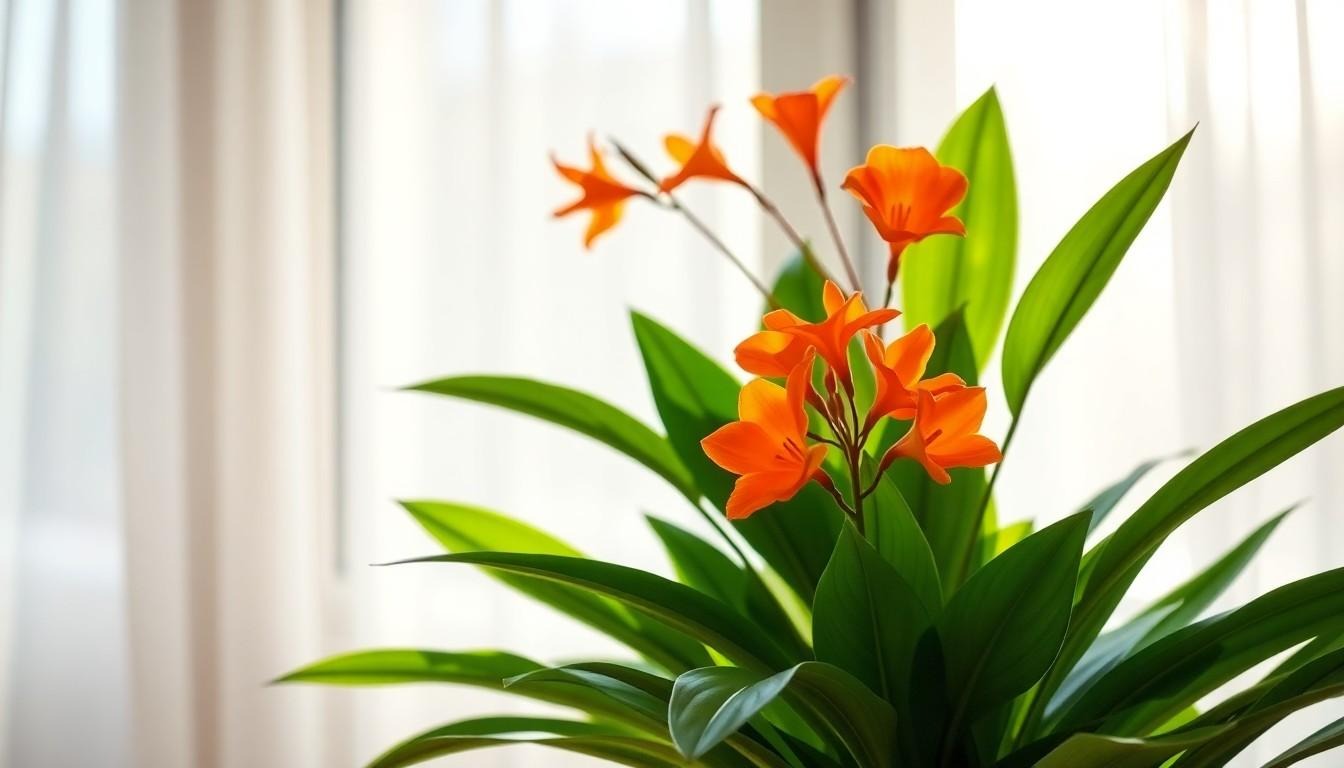Clivia plants are the perfect blend of beauty and low-maintenance charm, making them a favorite among both seasoned gardeners and those who can barely keep a cactus alive. With their vibrant blooms and lush green leaves, these resilient beauties can brighten up any space, even if it’s just your cluttered desk. If you think you don’t have a green thumb, fear not! Clivia’s care routine is as easy as pie—minus the baking disasters.
But wait! Before you rush out to grab one, let’s dive into the essentials of clivia plant care. From lighting requirements to watering schedules, mastering the art of keeping this tropical gem thriving is easier than you might think. Get ready to impress your friends with your newfound plant parenting skills—because who wouldn’t want to be the proud owner of a flourishing clivia?
Clivia Plants Care
Clivia plants, known for their striking appearance, thrive in various environments. These perennial plants produce bright, trumpet-shaped flowers, typically in shades of orange, yellow, or red. Lush, green foliage complements their blooms, creating an eye-catching display.
These plants grow best indoors but can adapt to outdoor conditions in suitable climates. Clivias prefer partial shade, making them ideal for spaces with indirect sunlight. They tolerate lower light levels, which allows them to fit into less illuminated areas of the home.
Watering requires attention to detail. Overwatering can harm the roots, leading to potential rot. It’s best to allow the soil to dry out slightly between waterings during the growing season. In winter, reduce watering frequency as the plant enters dormancy.
Fertilization supports healthy growth. Use a balanced, water-soluble fertilizer during the active growing months, typically spring through summer. Apply every four to six weeks for optimal results.
Repotting becomes necessary when roots outgrow their container. This typically occurs every two to three years. Choose a pot that allows for growth while ensuring that it has good drainage to prevent water accumulation.
Pest resistance is another aspect of Clivia care. Common pests include aphids and mealybugs, but they rarely cause significant damage. Regular inspection and maintaining a clean environment help deter pest infestations.
By understanding Clivia’s light preferences, watering needs, fertilization, repotting schedule, and pest management, gardeners can create an environment where these plants flourish beautifully.
Ideal Conditions for Clivia Growth

Clivia plants thrive under specific conditions that encourage vibrant blooms and healthy foliage. Understanding these needs can significantly enhance plant growth.
Light Requirements
Clivia plants prefer bright, indirect light. They flourish in areas where sunlight filters through, avoiding harsh rays that might scorch the leaves. While they can tolerate lower light levels, optimal flowering occurs with sufficient light exposure. Positioning them near east or west-facing windows offers ideal conditions for growth. For those growing Clivia in shadier spaces, some blooming may still occur. Balancing light levels plays a crucial role in maintaining the plant’s health.
Temperature Preferences
Temperatures between 65°F and 75°F (18°C to 24°C) suit Clivia plants best. They appreciate warmth but can tolerate temperatures down to 50°F (10°C) during winter. Keeping the plant away from drafts and heaters protects it from sudden temperature fluctuations. These plants thrive in stable environments, making consistent temperature maintenance essential for their growth. Seasonal changes impact their flowering cycle, so warmer conditions in spring can encourage blooming.
Humidity Levels
Clivia plants enjoy moderate humidity levels around 40% to 60%. Maintaining this humidity range can enhance their growth and blooming potential. If indoor air is dry, using a humidifier can help keep the atmosphere comfortable for the plant. Grouping Clivia with other houseplants creates a more humid microenvironment. Regular misting can also raise humidity levels but should be done sparingly to avoid leaf rot. Ensuring adequate humidity supports the plant’s overall vigor and flowering ability.
Watering Guidelines
Proper watering is essential for Clivia plant health. These plants thrive with a balanced moisture level, making it crucial to monitor watering practices closely.
Frequency of Watering
Water Clivia during the growing season, typically from spring to early fall. Allow the top inch of soil to dry before adding more water. It’s important to reduce watering frequency in winter when the plant enters dormancy. Water less frequently during this period, which can generally range from every two to three weeks. Adjustments may be necessary based on indoor humidity and temperature conditions. Checking the soil moisture level regularly encourages healthy root development.
Signs of Overwatering
Identify signs of overwatering early to prevent root rot. Yellowing leaves often indicate excessive moisture levels. Wilting or drooping leaves can also be a symptom of overwatering, contradicting the plant’s moisture needs. Smelly, mushy roots suggest significant damage due to stagnant water. If these issues arise, it’s essential to let the soil dry out completely before watering again. Drainage holes in pots facilitate water escape, reducing the risk of overwatering.
Soil and Fertilization
Clivia plants thrive in specific soil types and benefit from a consistent fertilization schedule. Understanding these aspects contributes to their overall health and longevity.
Best Soil Types
Well-draining soil is critical for Clivia plants. A mix of potting soil and perlite or coarse sand promotes drainage and aeration. Soil pH should range from 6.0 to 6.5, which suits the roots’ preferences. Consider using a specialty potting mix designed for orchids or other tropical plants. This type often contains organic matter, enhancing nutrient retention while encouraging proper moisture control. Providing good drainage minimizes the risk of root rot, allowing Clivia plants to flourish.
Fertilization Schedule
Fertilization during the growing season enhances Clivia’s vibrancy. Applying a balanced, water-soluble fertilizer every four to six weeks suffices. It’s beneficial to dilute the fertilizer to half-strength to prevent over-fertilization. Focus on spring and summer when growth is most active. In fall and winter, reduce fertilization frequency or stop it altogether, as the plants enter dormancy. Monitoring Clivia’s growth can signal when additional nutrients are necessary, and maintaining a consistent schedule promotes healthy blooms and lush foliage.
Common Pests and Diseases
Clivia plants can experience pest and disease issues, but identifying them quickly can help prevent damage. Common pests include aphids, mealybugs, and scale insects. Each pest manifests specific characteristics; aphids appear as small, soft-bodied insects often found on new growth, while mealybugs present as white, cottony masses on leaves and stems. Scale insects resemble small, brownish bumps typically found on the undersides of leaves, indicating their presence. Monitoring Clivia plants regularly enables earlier detection of these pests, ensuring a healthier plant.
Identifying Pests
Recognizing pests on Clivia plants involves observing changes in foliage. Yellowing leaves may indicate aphid infestations. A sticky residue or honeydew on leaves often signals aphid or mealybug problems. Infected leaves may also exhibit discolored patches or curling, prompting a thorough inspection. Scale insects often go unnoticed until significant damage occurs, as they blend with plant surfaces. Checking the undersides of leaves and around stems helps catch these issues early.
Treatment Options
Addressing pest infestations requires a multi-faceted approach. Insecticidal soap or neem oil effectively eliminates many pests without harming the plant. Applying these treatments directly to affected areas is crucial for success. Regularly wiping leaves with a damp cloth also helps dislodge pests like mealybugs. Quarantining new plants prevents pests from spreading, protecting existing Clivia. If infestations persist, using systemic insecticides may be necessary, ensuring pest control throughout the plant’s system. Always follow product instructions for safe application.

